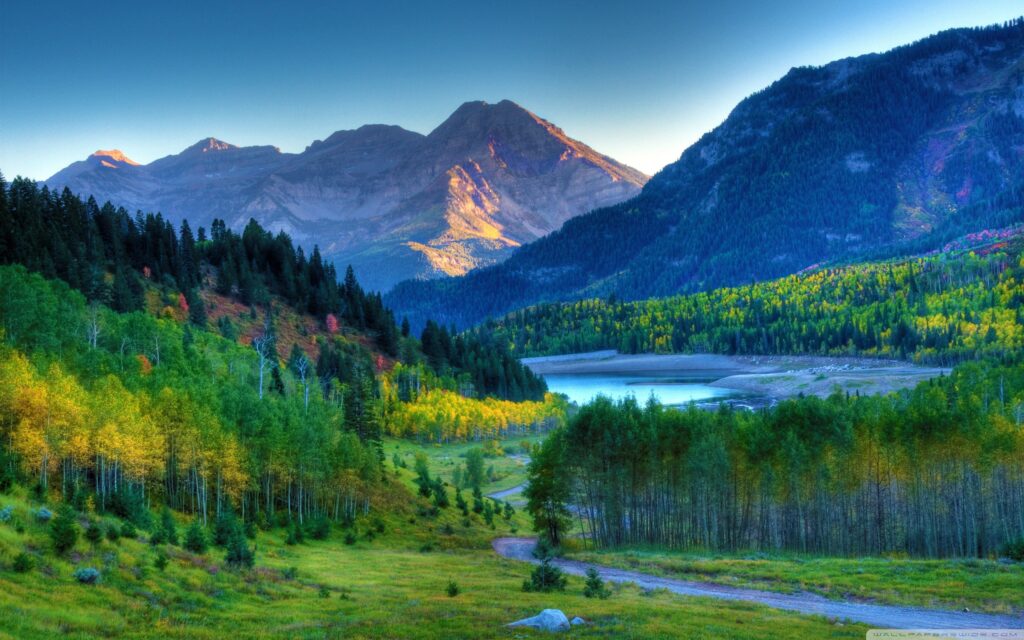
The Enduring Appeal of the Landscape: An Exploration of Art, Design, and Conservation
The landscape. It’s a word that evokes a multitude of images: rolling hills, dramatic coastlines, serene forests, and bustling urban environments. But the landscape is more than just a pretty picture. It’s a complex interplay of natural and cultural forces, a dynamic entity shaped by time, weather, and human intervention. This article delves into the multifaceted nature of the landscape, exploring its representation in art, its role in design, and the critical importance of its conservation.
The Landscape in Art: Capturing the Essence of Place
For centuries, artists have been captivated by the landscape, seeking to capture its beauty, its power, and its emotional resonance. From the early landscape paintings of the Renaissance to the Impressionist masterpieces of the 19th century, the landscape has served as a canvas for artistic expression. Artists like Claude Monet, with his iconic water lilies, and J.M.W. Turner, renowned for his dramatic seascapes, pushed the boundaries of landscape painting, exploring new techniques and perspectives.
Landscape photography, too, has played a crucial role in shaping our understanding and appreciation of the natural world. Ansel Adams, with his stunning black-and-white images of the American West, helped to raise awareness of the importance of wilderness preservation. Contemporary landscape photographers continue to explore the relationship between humans and the environment, capturing the beauty and fragility of our planet.
Beyond Representation: The Landscape as a Subject of Inquiry
But the landscape in art is not just about representation. It’s also about inquiry. Artists use the landscape to explore themes of identity, memory, and cultural heritage. They challenge our perceptions of nature, prompting us to consider our place within the larger ecosystem. [See also: The Role of Art in Environmental Activism]
Landscape Design: Shaping Our Surroundings
Beyond the realm of art, the landscape plays a vital role in design. Landscape architects and designers are responsible for shaping our outdoor environments, creating spaces that are both functional and aesthetically pleasing. From urban parks and gardens to residential landscapes and public spaces, landscape design has a profound impact on our daily lives.
Effective landscape design considers a wide range of factors, including site conditions, climate, user needs, and environmental sustainability. A well-designed landscape can enhance property values, improve air and water quality, and provide habitat for wildlife. It can also create spaces for recreation, relaxation, and social interaction.
Sustainable Landscape Practices
Increasingly, landscape designers are embracing sustainable practices, using native plants, reducing water consumption, and minimizing the use of pesticides and fertilizers. They are also incorporating green infrastructure, such as rain gardens and green roofs, to manage stormwater runoff and improve the resilience of urban environments. [See also: The Principles of Permaculture Design]
Landscape Conservation: Protecting Our Natural Heritage
Perhaps the most critical aspect of the landscape is its conservation. As human populations grow and development expands, the world’s landscapes are under increasing pressure. Habitat loss, pollution, and climate change are all threatening the integrity of our natural heritage. Conservation efforts are essential to protect these valuable resources for future generations.
Landscape conservation involves a variety of strategies, including the establishment of protected areas, the restoration of degraded ecosystems, and the promotion of sustainable land management practices. It also requires collaboration between governments, organizations, and individuals. Effective landscape conservation recognizes the interconnectedness of natural and cultural systems, addressing the social and economic factors that contribute to environmental degradation.
The Importance of Community Involvement
Community involvement is crucial for successful landscape conservation. When local communities are engaged in the planning and management of protected areas, they are more likely to support conservation efforts and to benefit from the economic opportunities that they create. [See also: Community-Based Conservation Initiatives]
Urban Landscapes: A Unique Set of Challenges
Urban landscapes present a unique set of challenges and opportunities. Cities are often characterized by high population densities, limited green space, and significant environmental pollution. However, urban landscapes can also be vibrant centers of culture, innovation, and economic activity. Creating sustainable and livable urban landscapes requires careful planning and design.
Green infrastructure, such as parks, gardens, and green roofs, can play a vital role in improving the quality of life in urban areas. These green spaces provide a range of benefits, including improved air and water quality, reduced urban heat island effect, and increased biodiversity. They also offer opportunities for recreation, relaxation, and social interaction.
The Role of Technology in Urban Landscape Management
Technology is also playing an increasingly important role in urban landscape management. Smart irrigation systems can help to reduce water consumption, while sensors can monitor air and water quality. Data analytics can be used to identify areas that are most vulnerable to environmental degradation and to target conservation efforts accordingly. [See also: The Future of Smart Cities]
The Future of the Landscape
The future of the landscape depends on our ability to balance the needs of human development with the imperative of environmental conservation. We must find ways to create sustainable landscapes that are both economically viable and ecologically sound. This requires a holistic approach that considers the interconnectedness of natural, cultural, and economic systems.
Education and awareness are also crucial. We need to educate the public about the importance of landscape conservation and to empower them to take action to protect our natural heritage. By working together, we can ensure that future generations will be able to enjoy the beauty and benefits of the landscape.
In conclusion, the landscape is a complex and multifaceted entity that plays a vital role in our lives. From its representation in art to its role in design and its critical importance in conservation, the landscape deserves our attention and our care. By understanding the challenges and opportunities that lie ahead, we can work together to create a more sustainable and equitable future for all.
